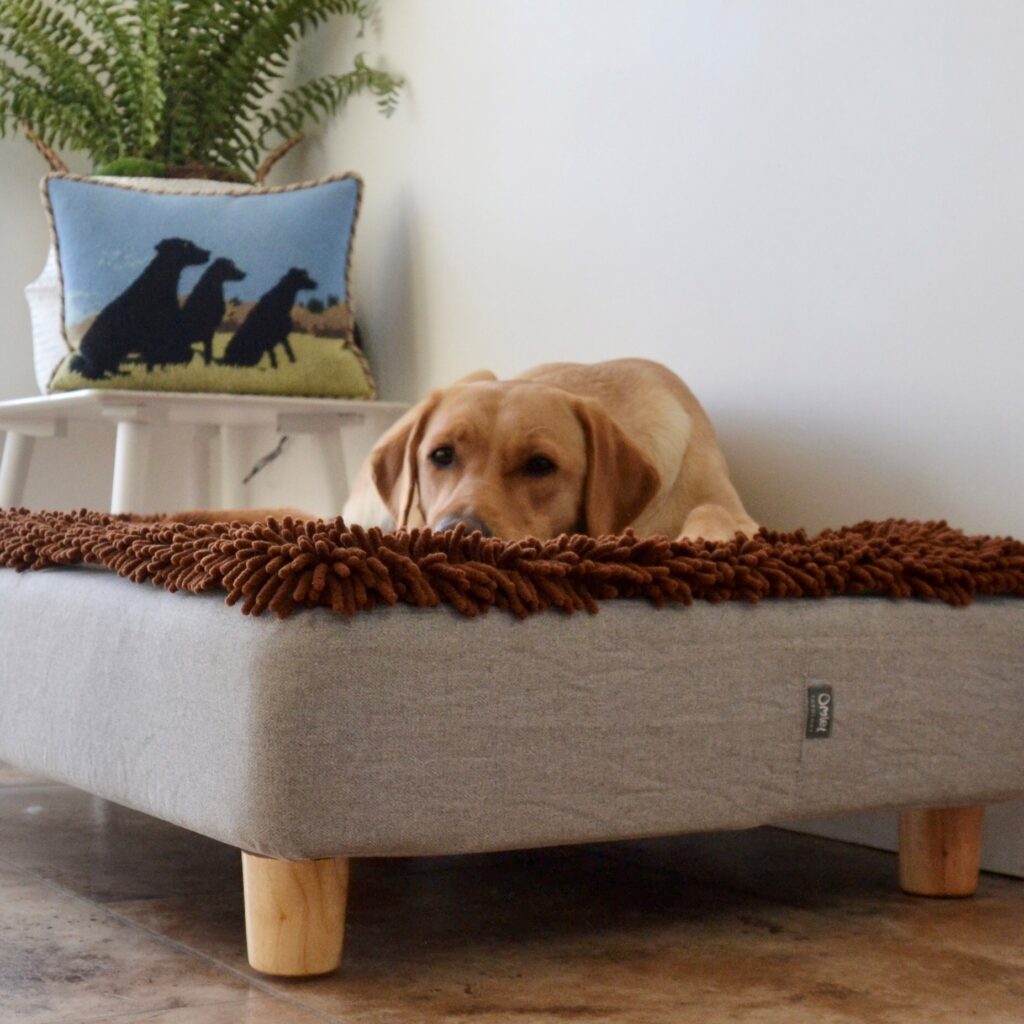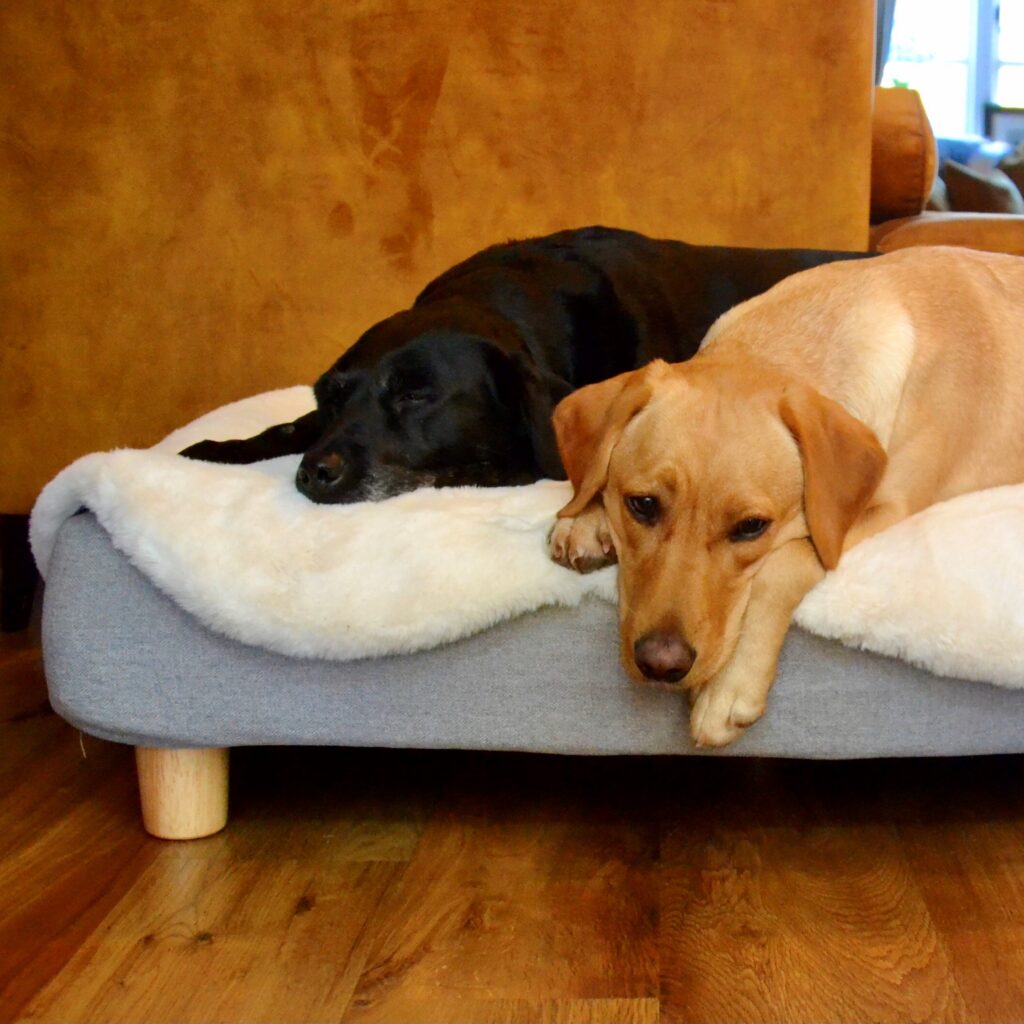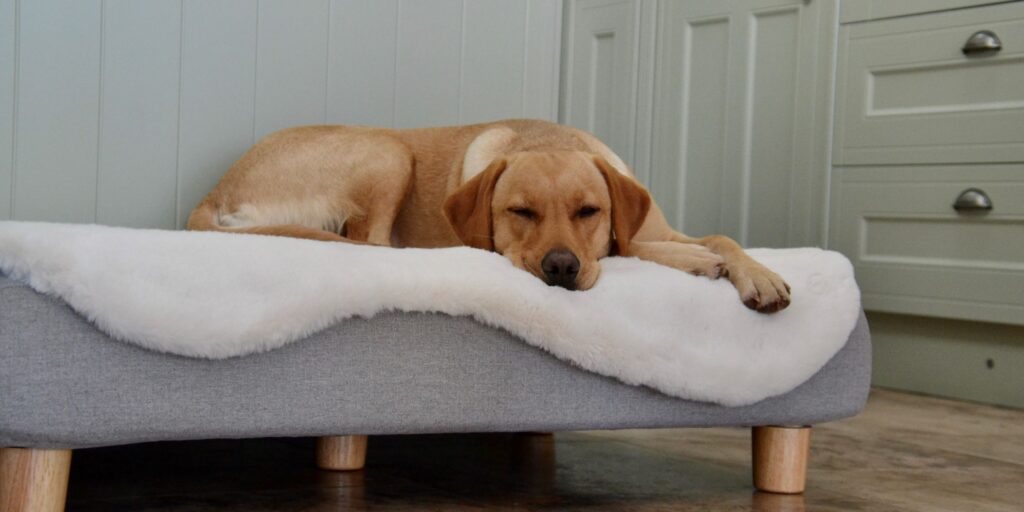The Ultimate Guide to Dog Hygiene from Dogtor Adem
Dogtor Adem, founder and owner of Dog-Ease, is a dog behaviourist and trainer with over 15 years experience working with dog owners and their canine best friends. In this blog post, Adem talks you through everything you need to know about dog hygiene, and shares his thoughts on the new, easy clean Topology dog bed from Omlet.
With the nights drawing in and the wetter weather becoming more frequent it’s always a struggle to keep the mess out of the house and the dog beds clean and smelling fresh (aux de dog, anyone?) So, when Omlet asked me to review their new Topology dog bed I couldn’t help but get a little excited! The bed features an extremely comfy memory foam mattress that sits raised from the floor on stylish legs (that you can choose to match your style of décor!), has a fully removable and washable cover, and can be ‘topped’ with several styles of zip off top covers that make it easy to keep clean and hygienic.
Firstly, let’s talk about dog hygiene and why it’s important.
Our dogs naturally try to keep themselves clean through the act of licking themselves. To help to keep themselves clean they also try to keep their beds clean and comfortable by ‘clearing the ground’ through digging and circling on their bed areas. In years gone by, when dogs were less domesticated, this was an important act and allowed them to clean and clear their bed area of uncomfortable vegetation, parasites and small creatures that could cause them harm. In fact, our dog’s wild ancestors such as wolves and wild dogs still very much display this type of behaviour. Clearly, in our homes, our dogs do not need to remove vegetation or small creatures from their bed areas before residing in them, however their dog beds if not washed can harbour other harmful organisms – bacteria and fungi. Studies have found bacteria and fungi such as MRSA, Salmonella, ringworm and listeria, as well as fecal matter, on our beloved dogs’ beds. Pollen can also be brought in, as well as general dirt and grime, which can aggravate allergies and skin conditions that both we and our dogs may have. It is also important to remember that bacteria and infectious diseases can be passed from animals to humans (these are known as zoonotic diseases). As a result, it is important for both our dog’s health and our own health that we regularly clean our dog’s body and bed area so that they are less likely to be carrying any harmful organisms that could make them or us unwell.
So, how can we keep our dog’s clean?
The key to keeping your dog clean is to regularly groom your dog. Whether you choose to do this yourself or perhaps book a professional to carry this out (or choose to combine both approaches!) It is a good idea to ensure that your dog is confident and finds being groomed and handled in this way a positive experience. This will not only make it easier to fully groom and fully clean your dog, it will also help to ensure that your dog enjoys the experience and does not become stressed or fearful. If your dog has never been groomed before, or perhaps already shows an aversion to be groomed, take your training for this slowly. Start with short sessions that simply introduce your dog to the type of items they might encounter or need to be touched with when being groomed. Think brushes, nail clippers, towels, and so on. It is a good idea to just allow your dog to observe these to begin with whilst you praise positive and confident behaviour around these objects with a tasty treat. Once your dog is confident around the chosen grooming objects you can then progress on to bringing them closer and perhaps interacting with and touching your dog with the grooming tools. Again, don’t forget to reward positive and confident behaviour as you do so. Continue with this approach slowly, building up your dog’s understanding and confidence, until you are able to fully handle and groom your dog as is needed. If your chosen method of cleaning your dog is a grooming parlour, you might also want to visit this location a few times prior to leaving your dog there. Remember to take your introduction of these items and to this new experience at your dog’s pace and don’t be afraid to go back a step if needed.

What actions can we teach to help make cleaning our dog easier?
In order to help you to groom and handle your dog with ease there are a few key actions I like to help owners to teach their dogs and would recommend that you structure into your training schedule.
The first is ‘stand’. Although at first glance this might seem like a bit of a boring ‘action’ (they’re just standing still, right?!), this is actually a very useful command. If your dog understands this command they will be able to stand still whilst you perhaps wipe their paws and legs when coming in from a wet or muddy walk, when needing to check for grass seeds or sticky fauna that might have attached itself to their coat whilst walking, or when brushing their body – particularly their chest and stomach area. It can also be useful to you or a groomer when washing your dog, allowing you or your groomer to clean all parts of their body with ease.
The second command is ‘flat’. This is where the dog lays flat on their side. Again, this can help with general grooming of their coat and, in particular, being able to easily clean ears and eyes as well as enabling easy access to clean your dog’s paws and clip their nails.
The third command I would recommend is ‘twist’. This is where you teach a twist or spin command and I like to use this whilst my dogs are standing on the front or back door mat after a walk so that effectively they are wiping their own feet! This action can also be a fun one for children to practice alongside their parents to help keep the family dog clean as well as be an entertaining party trick!
How can we keep our dog’s bed clean?
If we are keeping our dog’s nice and clean it makes sense to also keep their beds clean – if you think about it, you wouldn’t shower to then get into a bed that hadn’t been washed for months! The most obvious way to keep our dog’s bed clean is to wash their bed. This is easier said than done with many beds on the market being too large for the average washing machine or not having removal covers that can be washed. At minimum, loose debris needs to be regularly removed from the bed and the bed should then be disinfected with a suitable animal friendly cleaner. Ventilation is also key to ensuring beds stay clean and hygienic as airflow ensures that any moist areas are able to dry quicker and that bacteria is limited in its ability to grow (dark, warm and moist areas encourage bacteria growth). Hanging your dog’s bed out in the sun to dry can also assist with elimination of any remaining bacteria after washing and of course after cleaning your dog’s bed it is also important to ensure it is fully dry before allowing them to use it again.

What if my dog doesn’t seem to like to sleep on their own bed?
In order to minimise the built up of dirt, fur and bacteria in places in your home that you may not want them, it’s important that we make our dog’s designated bed area as inviting as possible so that this is the area they choose to reside in. Think about the type of bed your dog prefers. Some breeds like to stretch out whilst others like to curl up. Some prefer a comfortable flat surface, whilst others prefer to cuddle into sides that make them feel cosy or more secure. The more inviting and comfortable your dog’s bed is, the more likely your dog is going to want to reside and sleep on it. It is good practice to observe how your dog likes to reside so that you can buy a bed for their individual preference. This is the first step to encouraging your dog to reside on their designated bed area.
If you have ensured that your dog’s bed is as inviting as possible and your dog still does not seem to want to sleep on it, think about the location of your dog’s bed. Is it in a draft free area? Is it away from direct sunlight that could make them hot or is perhaps uncomfortable on their eyes? If so, the next step is to practice making their bed area a safe and fun place to reside. You can teach the action ‘go to bed’, offering a tasty reward for their compliance. You can also offer food items such as chews and food dispensing toys on their bed, encouraging them to stay in this area and making it fun to do so.
It is also important to ensure that your dog is ready to settle and lay on their bed area by ensuring they have had enough mental and physical stimulation across the day to tire them and help them to then relax. This last point can also help with addressing the behaviour issue ‘separation anxiety’, which may be another reason why your dog might prefer to perhaps sit physically close to you rather than on their bed. If you suspect your dog has separation anxiety it is advisable to seek help from a behaviourist to address this issue so that your dog is able to lead a confident and stress-free life.
What does this mean we should ideally be looking for in a dog bed?
Given the above, my recommended ‘wish list’ for a bed would be that
- It is easy to clean with removable covers
- It is easy to clean around and under the bed, and ideally raised off of the floor to allow ventilation
- It suits your dog’s individual preferences i.e. is big enough to lay flat on, or perhaps has comfy bolster sides if your dog likes to snuggle into these.
The Omlet Topology ticks all these boxes, plus looks super stylish and can be styled to fit a range of interiors. The zip off top also makes extremely light work of regularly cleaning the bed, and if you purchase more than one topper your dog never needs to be without a clean place to reside! After trying out the Topology bed for a few weeks now, I’m about to purchase another, my dogs love this bed and so do I!
Dogtor™ Adem
Dog Behaviourist and Trainer
Owner of Dog-ease
This entry was posted in Dogs
